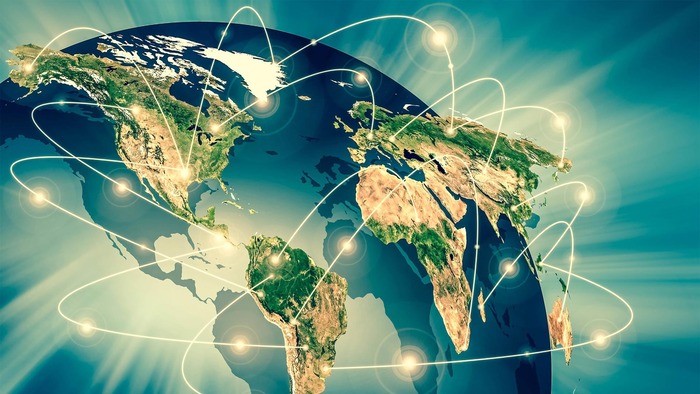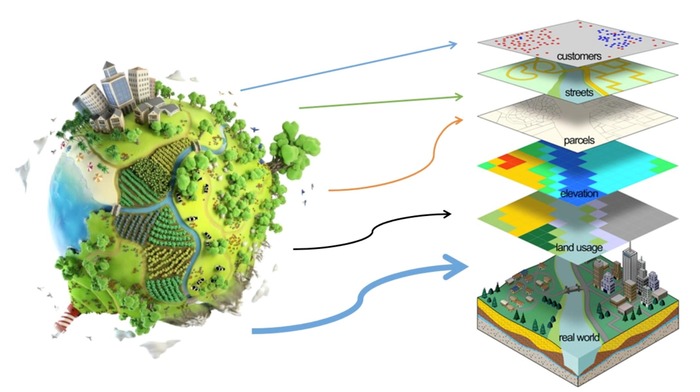Understanding the world around us has always been a driving force behind human innovation. From early explorers mapping uncharted territories to modern scientists analyzing urban growth patterns, the quest to accurately measure and interpret our environment continues to evolve.
Today, geospatial technology sits at the forefront of this endeavor, providing the tools needed to capture, analyze, and visualize geographical data with unprecedented accuracy.
Central to this technological revolution is the use of advanced positioning and motion-tracking tools such as the GNSS IMU receivers, which combine satellite-based location data with inertial measurement to offer precise insights into the Earth’s surface and structures.
The integration of Global Navigation Satellite Systems (GNSS) signals with Inertial Measurement Units (IMU) in one device enables the collection of highly accurate geospatial data even in challenging conditions where satellite signals alone may falter.
This fusion of technologies is particularly valuable in industries like construction, agriculture, environmental management, and disaster response, where precise positioning and orientation data can make a critical difference. As geospatial technology continues to advance, it is opening up new possibilities for how we interact with and manage our physical world.
Mapping the Unseen: How GNSS IMU Technology Works
At its core, GNSS technology involves using a network of satellites to determine a device’s position on the Earth’s surface. This method offers global coverage and is widely used in applications ranging from smartphone navigation to advanced surveying equipment.
However, GNSS systems alone are not infallible. In environments with dense forests, urban canyons, or tunnels, satellite signals can become weak or obstructed, leading to positioning errors.
This is where IMU technology steps in. An IMU consists of accelerometers, gyroscopes, and sometimes magnetometers that measure acceleration, angular velocity, and orientation.
When combined with GNSS, the IMU fills in the gaps by providing motion data that helps maintain accurate positioning even when satellite signals are disrupted. The result is a seamless integration of satellite and inertial data, offering continuous and highly accurate geospatial information.
This combined approach is particularly effective in dynamic environments. For example, in drone-based surveying, GNSS IMU technology ensures that the drone’s flight path is stable and that the geotagging of aerial images is precise.
This precision is crucial for creating detailed 3D models, conducting volumetric analyses, or monitoring changes in topography over time. Similarly, in autonomous vehicles, GNSS IMU systems enable safe navigation by providing real-time positioning and orientation data, even when GPS signals are unreliable.
Transforming Industries: Real-World Applications of Geospatial Tech
The versatility of geospatial technology, enhanced by GNSS IMU integration, is transforming a wide array of industries. From agriculture to infrastructure development, the ability to map, measure, and model the environment with precision is unlocking new levels of efficiency, safety, and innovation.
1. Precision Agriculture: Growing Smarter
In agriculture, geospatial technology supports the development of precision farming techniques that help maximize crop yields while minimizing resource use. By combining GNSS data with soil sensors, farmers can create detailed maps of their fields, identifying variations in soil quality, moisture levels, and nutrient needs.
When paired with IMU technology in autonomous tractors or drones, this data enables precise planting, targeted irrigation, and optimized fertilization strategies.
For example, drones equipped with GNSS IMU modules can fly over fields, capturing high-resolution images and data on crop health.
These insights allow farmers to detect issues such as pest infestations or nutrient deficiencies early, applying treatments only where needed. This targeted approach reduces costs, increases productivity, and supports more sustainable agricultural practices.
2. Construction and Infrastructure: Building with Precision
In construction, accuracy is paramount. Whether laying the foundation for a new building or constructing a bridge, even small measurement errors can lead to costly and potentially dangerous consequences. Geospatial technology, particularly when enhanced with GNSS IMU systems, provides the precision needed to avoid these pitfalls.
During site preparation, GNSS IMU-equipped equipment can conduct topographical surveys quickly and accurately. This technology supports the creation of digital terrain models that guide excavation, grading, and foundation work.
Throughout the construction process, GNSS IMU receivers help monitor the position and orientation of machinery, ensuring that structures are built according to exact specifications.
Additionally, geospatial data plays a vital role in infrastructure maintenance. By using drones and sensors, engineers can assess the condition of roads, bridges, and pipelines without needing to disrupt services or place workers in hazardous environments.
This proactive approach to maintenance helps extend the lifespan of critical infrastructure and reduces the risk of unexpected failures.
3. Environmental Management: Protecting Natural Resources
Geospatial technology also contributes significantly to environmental conservation and management. Accurate mapping of natural landscapes allows researchers to monitor changes in ecosystems, track wildlife habitats, and manage natural resources more effectively.
By integrating GNSS IMU technology with remote sensing tools, scientists can gather data even in remote or difficult-to-access areas.
One practical application is in forest management. Using geospatial data, conservationists can map tree cover, monitor deforestation, and assess the health of forests. This information supports initiatives to combat illegal logging, restore damaged ecosystems, and implement sustainable forestry practices.
Similarly, in coastal areas, geospatial technology helps track shoreline erosion, manage fisheries, and plan responses to natural disasters such as hurricanes or tsunamis.
The Future of Geospatial Technology: Where Innovation Leads
As technology continues to evolve, so too will the capabilities of geospatial tools. The integration of artificial intelligence (AI) and machine learning with geospatial data is opening new possibilities for predictive analytics and automated decision-making.
These technologies can analyze large datasets, identify patterns, and generate insights that support smarter planning and management across various sectors.
For instance, in urban planning, AI-driven geospatial analysis can simulate the impact of new developments on traffic patterns, public transport efficiency, and environmental quality.
In agriculture, machine learning algorithms can analyze drone data to predict crop yields, optimize harvesting schedules, and enhance food security. These innovations not only improve efficiency but also contribute to more sustainable and resilient practices.
Another exciting development is the increasing use of real-time data in geospatial applications. With advancements in IoT (Internet of Things) technology, sensors embedded in infrastructure, vehicles, and natural environments can provide continuous data streams.
When combined with GNSS IMU systems, this data enables dynamic mapping and monitoring, supporting everything from smart city management to disaster response strategies.
Conclusion: Embracing the Power of Geospatial Technology
Geospatial technology, bolstered by the integration of GNSS IMU systems, is proving to be a game-changer in how we understand and interact with our world.
By offering unparalleled accuracy, real-time insights, and versatility across industries, these tools are helping unlock the Earth’s potential in ways that were previously unimaginable.
Whether improving agricultural efficiency, ensuring construction safety, or advancing environmental conservation, geospatial technology provides the data-driven foundation needed for informed decision-making.
As the technology continues to develop, the possibilities for its application will only expand, offering new opportunities to create smarter, safer, and more sustainable environments.
For professionals in surveying, engineering, agriculture, and beyond, embracing geospatial technology is not just about adopting new tools—it is about leading the charge into a future where technology and innovation work hand in hand to build a better world. With the continued integration of GNSS IMU technology, that future is not only possible but already within reach.


